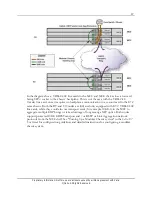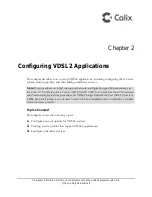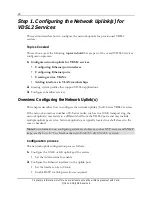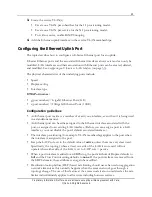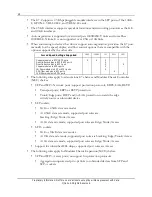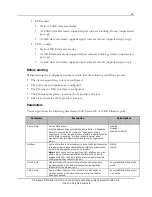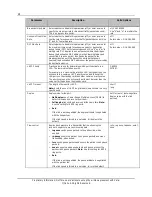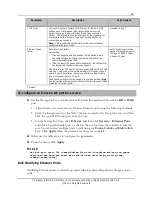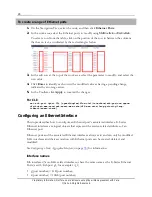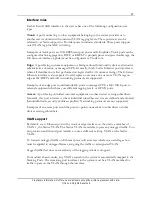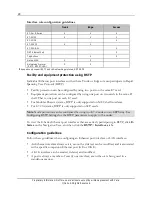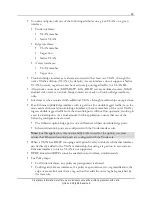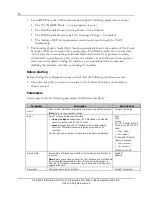
15
Proprietary Information: Not for use or disclosure except by written agreement with Calix.
© Calix. All Rights Reserved.
Packet mode utilizes PTM encapsulation (Ethernet services) for xDSL port operation. All
traffic on the port shares a single path and requires that all Basic Packet Functions (BPF)
be performed in order to support varied services (VLAN) on the port. This is possible
when using any of VDSL2, ADSL2+ or ADSL2 physical layers. PTM mode is not
possible with ADSL1 physical layers (for example, G.dmt).
ATM mode utilizes ATM encapsulation for xDSL port operation. In this case, the E-
Series performs a SAR function to interwork packets to/from cells. ATM mode can be
used with all xDSL physical layers, except VDSL2.
Fallback mode is where the E-Series automatically determines that it cannot train up in
VDSL2 mode, and then uses ADSL2+ instead. If the port can use PTM-TC, then it does
use it. If the xTU-R does not support PTM-TC, the E-Series uses ATM-TC and
performs the SAR function. Note that the E-Series currently supports up to six PVCs per
xDSL port for ADSL operation.
Legacy mode (this mode is only supported on the C7 and E5-series Calix products, and
NOT supported on the E-Series) is distinctly different than the other modes in that ATM
VC are connected directly to individual ATM VC on the DSL line, just as with a
traditional ADSL card. As such, QoS is provided by the ATM VC, rather than on a per-
priority, per VLAN port basis. Traditional CAC functions are performed to ensure that
the aggregate capacity of the ATM VC feeding the port do not exceed the ports capacity.
The exception being handling of multiple UBR VC on egress, wherein some rate shaping
and priority queuing are required.
Bonding
The VDSL card supports bonding wherein a single “bonded” port can be created from
multiple physical ports. Bonded ports are treated the same as individual ports. Therefore, all
aspects of Basic Packet Functions (BPF) that are applicable to individual ports are also
applicable to Bonded ports.
Vectoring
E-Series supports unit level vectoring on all VDSL2 equipment. Vectoring eliminates cross
talk between VDSL2 lines and thus recovers bandwidth that would otherwise be “lost” due
to crosstalk. Vectoring also ensures a uniform level of performance from pair to pair in a
vectored binder group. The E-Series vectoring complies with the ITU G993.5 standard.

















